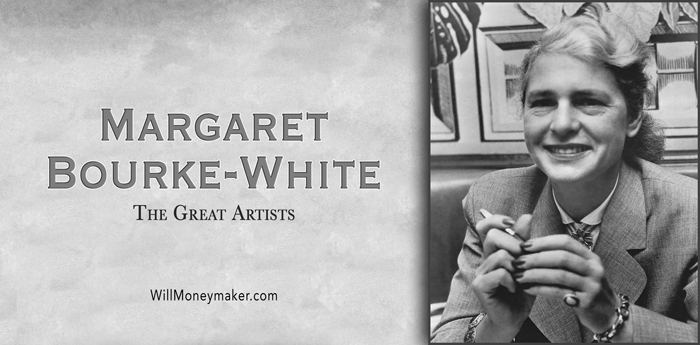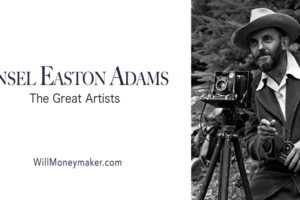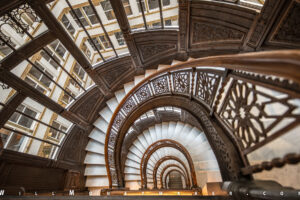America’s First Female War Correspondent
Margaret Bourke-White was a famous American documentary photographer, best known for her inside photos of the Soviet Union’s first five years. She was also the first female American war correspondent photographer and had a photo of her on the first issue of Life Magazine. She is well-known in photography circles, but not as well-known elsewhere. Because she was such a pioneering woman in so many ways, more people should know about her. It is time that her fascinating personal and professional story be told to the world. Here is the story of the indomitable Margaret Bourke-White.
Born June 14, 1904, in the Bronx, New York City, Margaret was originally called Margaret White. She was the daughter of Joseph White and Minnie Bourke. Her father was a Jewish immigrant from Poland, though he did not practice his faith, while her mother was a descendant of Irish Catholic ancestors. This marriage was unusual in that Jewish people and Catholics very rarely married outside of their faith at this time in American history.
Her family moved to Bound Brook, New Jersey when she was little, and she spent most of her childhood there, the middle of three children, with a younger brother and an older sister. Her father was an inventor and engineer, while her mother was a homemaker. She claimed she learned perfectionism from her father and an aim of self-improvement from her mother. Her younger brother, a successful businessman himself, described their parents as free thinkers who were interested in helping humanity and themselves become better through personal achievement, and he attributed this to the success of all of their children, including Margaret (their older sister was a successful lawyer).
Margaret began taking photographs as a hobby when she was a teenager, partly due to her father’s interest in cameras. After graduating from Plainfield High School in Union County, New Jersey, she went on to study herpetology at Columbia University in New York City. However, after taking a photography course with Clarence White, she became even more interested in taking pictures.
Her education was not straightforward, due to several things that happened while she was in her college years. First was the death of her father, which happened during her first semester at Columbia. Because of this, she left the school. This began a series of college transfers that took Margaret to the University of Michigan, Perdue University in Indiana, Western Reserve University in Ohio, and Cornell University in Ithaca, New York, where she finally graduated with a Bachelor of Arts with a concentration in photography in 1927. She moved to Cleveland, Ohio the next year and opened a commercial photography studio, focusing on architecture and industrial photography.
While a student in 1924, she married Everett Chapman, but they divorced after only two years of marriage. Upon their divorce, Margaret hyphenated her last name with her mother’s maiden name.
She married again to novelist Erskine Caldwell in 1939, but they divorced in 1942. They did collaborate on a book together during their brief marriage.
Margaret earned national attention as a photographer for the first time when her photography studio was commissioned by Otis Steel to take photos inside the steel mills. This was a big deal for her, and a leap of faith for Otis, because steel was a sensitive national defense industry, and because it was generally thought at the time that women could not withstand the heat and hazardous conditions of a steel mill. Margaret proved them all wrong, and, using new lighting techniques to make the red and orange colors of the steel mills visible on film (which, at the time, was sensitive only to blue light), made some of the best early steel mill photographs in America. She was now on the national radar of photographers.
Margaret began a photojournalism career in 1929 when she accepted a job at Fortune Magazine as an associate editor and staff photographer. She worked there until 1935, during which time, she became the first American photographer allowed to take industrial photographs inside the new Soviet Union.
She became the first-ever female photographer for Life magazine the next year. She was employed there for four years the first time but kept coming back to the magazine for different periods of time over and over again for the next three decades, until her retirement. Many of the photos she took while working at Life magazine became cover photos, and one she took of the construction of Fort Peck Dam even became a U.S. commemorative postage stamp.
Like her contemporary peer, Dorothea Lange, Margaret also took pictures of victims of the Dust Bowl during the Great Depression. Though none gained the notoriety of Lange’s Migrant Mother, one of her Dust Bowl photographs achieved high recognition and praise after it was published as a cover photo in Life magazine.
While working with Life magazine, and as an independent photojournalist during periods she was not with the magazine, Margaret traveled eastern Europe, taking pictures of the Nazi regimes in Germany, Austria, and Czechoslovakia, and the Communist regime in the Soviet Union. She even snapped a rare picture of Joseph Stalin with a smile. She also got photographs of Stalin’s mother and great-aunt during this trip.
During WWII, Margaret was the nation’s first female war correspondent, as well as the first woman allowed to take photographs in combat zones. She was the only foreign photographer in Russia when Germany broke its treaty with them during the war. Hiding out in the American embassy building, she captured the ensuing German invasion on film, the only foreign photographer to do so.
She went with the U.S. Air Force to North Africa and with the U.S. Army to Italy during the war, and actually came under enemy fire while in Italy. In fact, she had many adventures and near-misses during the war, including being on a boat that got torpedoed in the Mediterranean and stranded on an Arctic island. She was always rescued, and the people at Life magazine began to call her Maggie the Indestructible.
She finished up the war photographing the liberated Buchenwald concentration camp, then photographed the liberation of India from the British Empire and its partition into India and Pakistan. That assignment included obtaining a photograph of Gandhi.
Margaret developed Parkinson’s disease in 1953 and gradually had to slow down her work until her retirement in 1969. She died of Parkinson’s in 1971. Her photographs are in several books, as well as museums across the nation, including at the Metropolitan Museum of Art in New York City.





